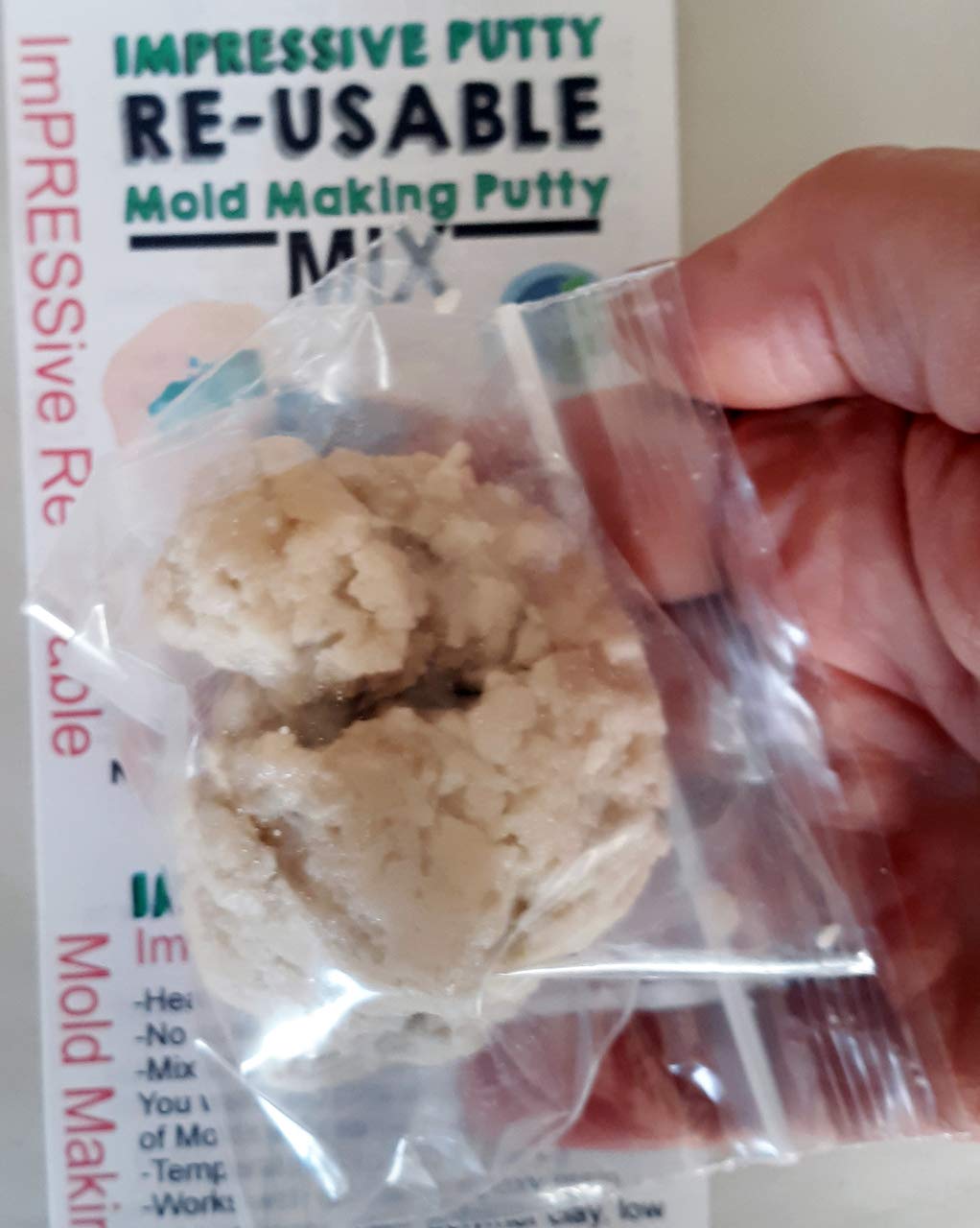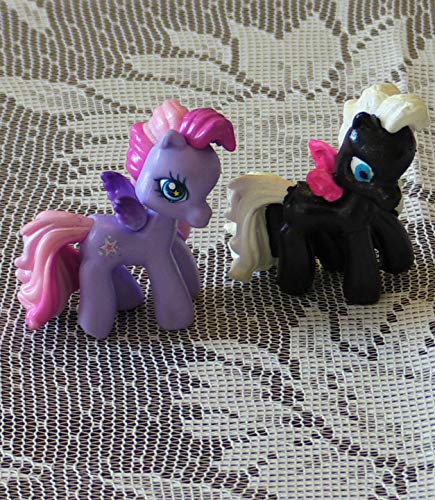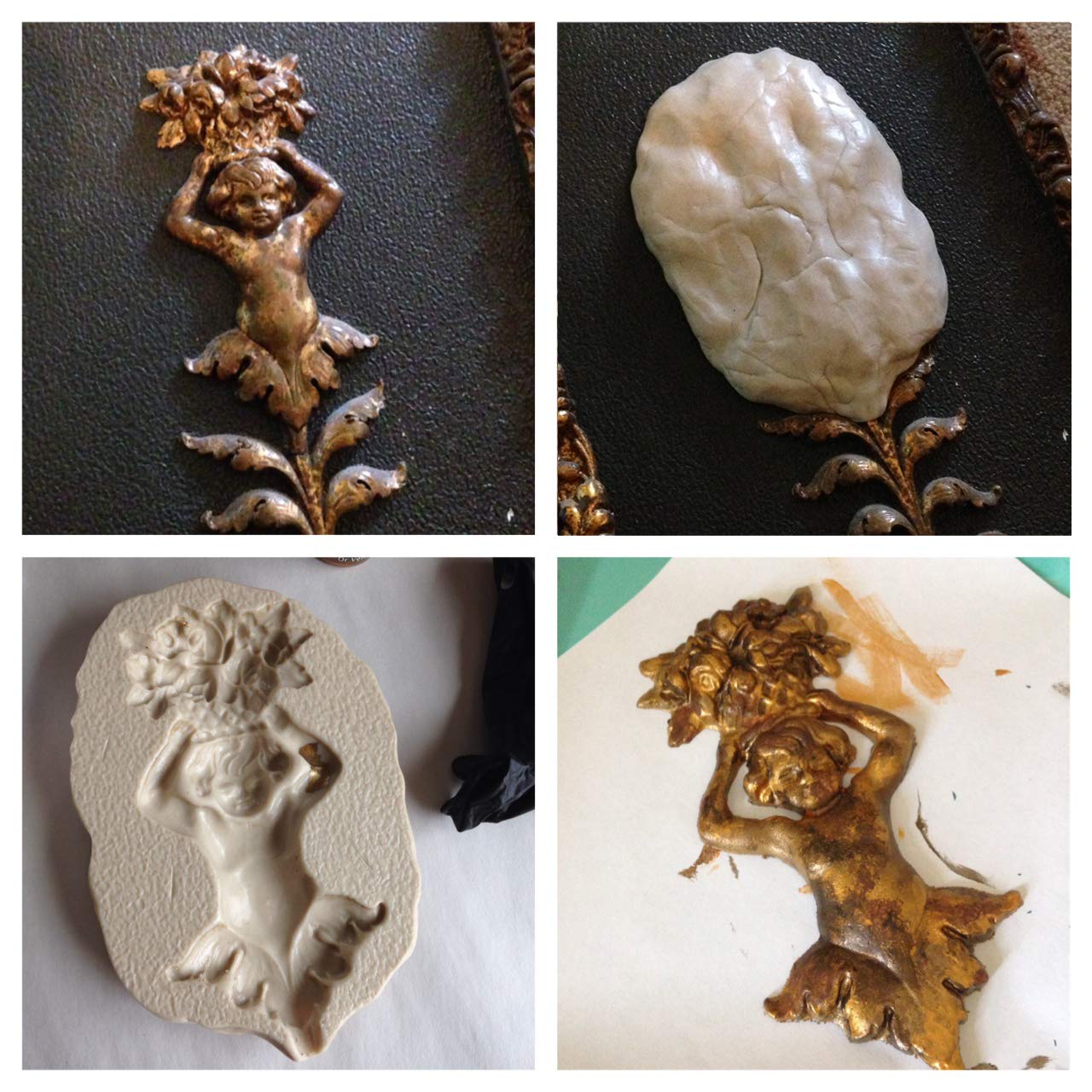








Craft Your Dreams into Reality! ✨
The Impressive Re-Usable Mold Making Putty Mix is a versatile crafting solution that transforms from crumbly to smooth with heat. Ideal for creating custom molds without the need for a mold box, it can withstand high temperatures and is compatible with various materials, making it a must-have for DIY enthusiasts and professionals alike.
L**N
REALLY WORKS! and REALLY IS REUSABLE
I was- and still am really- a complete novice to any kind of casting. I selected this product for price and because it said it was reusable.I was missing the tiny leg of an antique dollhouse chair and used this-- with two-part epoxy- to try to make it. my first attempt- my own fault- didn't work. but now, this moulding material has EPOXY in it-- what will happen??EXACTLY per instructions, upon reheating, this material went back to perfectly flexible. have used it several more times and been REALLY PLEASED with the results. makes very precise moulds and works perfectly every time! i can't say enough positive about it really!great for newbies-- works EXTREMELY WELL
J**R
the stuff is impressive.
very straight forward and easy to use. This pack is going to be most useful to crafters working on smaller projects. cant wait to try out theri other products!
M**S
Cool solution but difficult perfection
I needed to make a few knob copies for an old Bakelite radio missing a couple knobs.The idea was to make molds from the original knobs, then cast replacements using 2 part epoxy, and resin pigments to replicate the knobs as best I could. An expected sub-task would be millling/drilling the knob and final finish/polish. I was not expecting a perfect copy, just a reasonably good useable knob.Aside for the poor probability of getting the epoxy colorant pigment mix correct, the mold and finish of the knobs is equally difficult in a single batch.Matching the old with the new was hopeful so multiple mold pourings from one batch would help.I am unsure of the final outcome, but I will note here the problems I encountered and limited success with this method.The material came in a plastic bag and resembles moist pizza dough.I followed the directions to initialize the mold material (microwave a few seconds and knead in the bag -twice).After letting it cool enough to handle, I roll it into two balls (golf-ball size) and press the two knobs I had into the material. So far so good. Pop these into the freezer to chill harden for 30 minutes.Then its on to the resin phase.In the image, the two knobs on the left are the first attempt. The colorants (brown and black) were not even close so I had to purchase a pigment kit that had 'purplish red' because Bakelite has traces of red in the otherwise dark coffee color. Note the grainy appearance and texture.Second attempt a couple weeks later.The 3 knobs surrounding the foreground mold being from the first attempt.That mold was simply re-used. It is the 'better' of the two molds made.It characteristically had a much smoother surface texture than the second mold.The shot glass with the mold material was a second attempt to re-cycle the mold material.Because the finished knob needed a smooth texture, it was important to create a mold with a smooth texture. This is where problems arose with the mold material.For one, the material is semi-oily, but this just helps as a release agent, in removing the object being copied, but it also creates a rough surface for the resin to copy. I used a Q-tip to gently remove some of the excess but it was minor in this first 'generation' use of the mold material. More on this later.The second problem was with the material's difficulty with achieving complete ('glass transition'?) for lack of better term...in other words, as with pizza dough when kneaded the dough remains a semi fluid and any folds, creases or bubbles tend to disappear and meld into a single solid mass. (unless the dough is very dry)This mold material upon 'recycling' for re-use I found to be resistant to becoming a solid mass without folds or creases entrained within. In fact, it seemed to become worse as kneading continued.To solve this, or at least minimize towards attainment of a smooth texture -I had to repeatedly 'cook' the mold material but this had to be done gently or the 'dough' would begin to swell and smoke in the microwave.I tried this several times, at first kneading the hot dough as if it were pizza dough.This failed to remove folds and creases and left the material unuseable. It also seemed to release more of the oily constituent of the material.So it occured to me to heat the material in a SHOT GLASS and avoid any attempt at kneading the dough and let gravity settle it into an amorphous mass with as few surface perturbances as possible.This produced slightly better results but as you can see, a residue of undesirable texture in the castings.In summary; Unique material but, you have only one shot at getting a pseudo-texture-less mold copy of the item you are attempting. A liquid mold material would likely produce better results in my case.
C**S
Easy to use
This was easy to use plus as described I was able to reuse for a second project.
I**L
Amazing! Thrilled!
Very easy to use, simple directions to follow, highly recommend! Looking forward to making more molds!
K**R
Works just like advertised
Easy to use. I will buy again
M**N
Meh
Tried this product. Bought a few of them to use in large quantities. For the price going with a mold putty seems better in the long run.
S**O
Great
Worked perfectly
Trustpilot
2 months ago
5 days ago